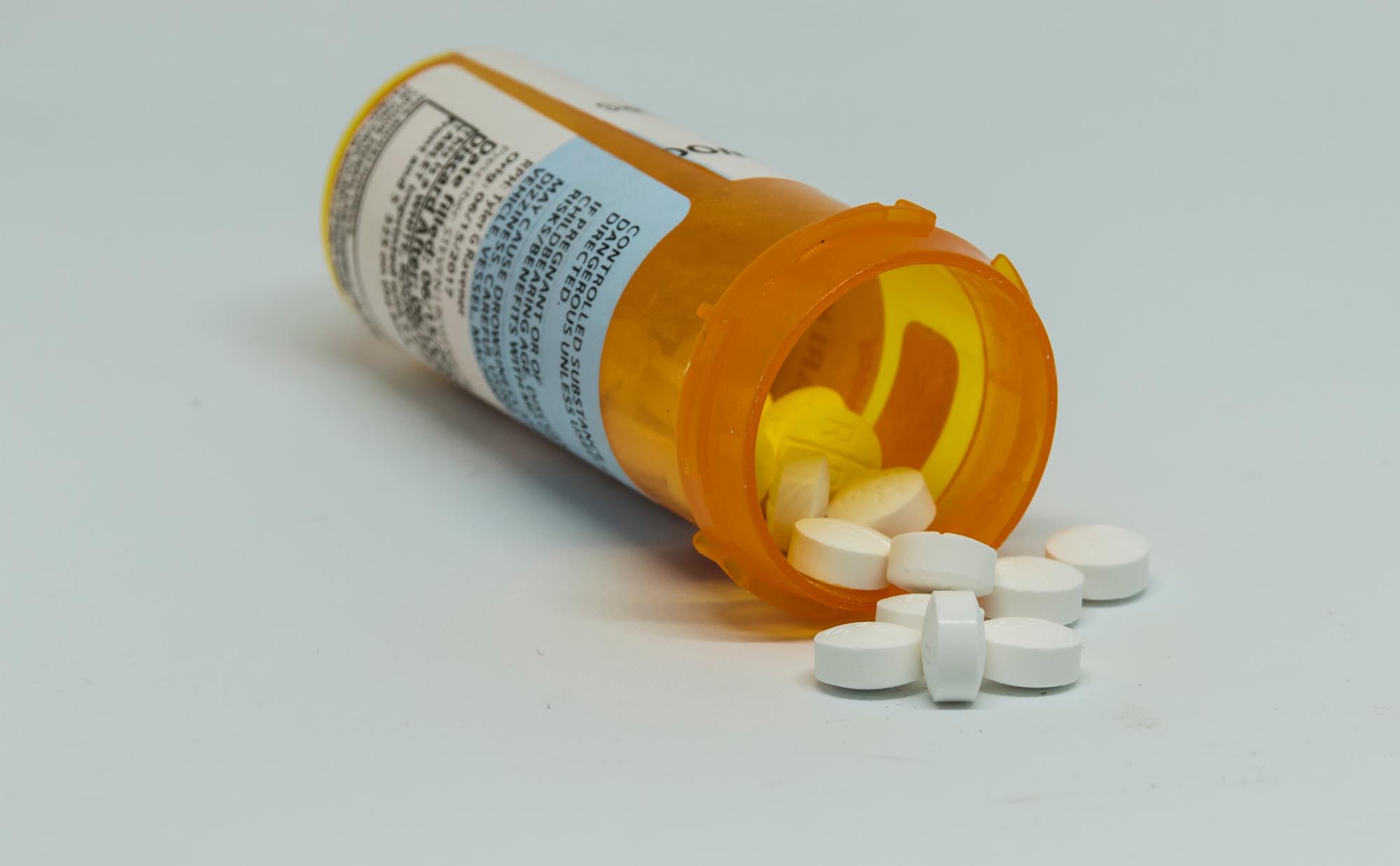Percocet is one of the most commonly prescribed medications for pain management in the United States. This powerful prescription drug combines two active ingredients: oxycodone, a strong opioid pain reliever, and acetaminophen, a non-opioid pain medication.
While Percocet is effective for managing moderate to severe pain, its opioid component carries significant risks. The drug works by binding to specific opioid receptors in your brain, changing how you perceive pain and creating feelings of pleasure. These effects can lead to physical dependence and addiction, even when taking the medication as prescribed.
Why Understanding Percocet Addiction Warning Signs Matters
Recognizing the warning signs of Percocet addiction early can make a critical difference in recovery outcomes. The path from prescription use to addiction can be subtle, with changes in behavior and physical symptoms developing gradually. Understanding these signs helps identify potential substance use issues before they escalate into severe opioid use disorder.
If you or someone you know struggles with Percocet use, professional help exists. Treatment options range from medical detox to comprehensive rehabilitation programs designed to address both the physical and psychological aspects of addiction. For personalized addiction treatment support, consider reaching out to SoCal Detox in Laguna Beach. They offer various addiction treatment options, including residential treatment, which could significantly aid in recovery.
Understanding Percocet: Composition, Effects, and Addiction Potential
Percocet combines two active ingredients: oxycodone and acetaminophen. Oxycodone, a powerful opioid, attaches to specific receptors in your brain and nervous system. This attachment triggers a cascade of chemical reactions that block pain signals and release dopamine – your brain’s natural reward chemical.
The acetaminophen component enhances pain relief through a different mechanism, targeting inflammation and fever. This dual-action approach makes Percocet highly effective for managing moderate to severe pain.
How Percocet Works
When you take Percocet, it works in two ways:
- Oxycodone Action: Oxycodone binds to opioid receptors in the brain and spinal cord, blocking pain signals and producing feelings of euphoria and relaxation.
- Acetaminophen Action: Acetaminophen reduces pain by inhibiting certain chemicals in the body that cause inflammation and fever.
This combination of actions makes Percocet more potent than taking oxycodone or acetaminophen alone.
Effects of Percocet
Here are some common effects you may experience when using Percocet:
- Intense pain relief
- Euphoric feelings
- Deep relaxation
- Reduced anxiety
- Drowsiness
The Difference Between Percocet and Oxycodone
The key difference between Percocet and standalone oxycodone lies in the acetaminophen component. While both medications contain the same opioid base, Percocet’s added acetaminophen creates a stronger pain-relieving effect.
The Addictive Potential of Percocet
Your brain’s natural reward system responds strongly to oxycodone, creating a risk for dependency. Each time you take Percocet, your brain records the pleasurable sensation, potentially leading to:
- Increased desire for the drug
- Changes in brain chemistry
- Development of tolerance
- Physical dependence
These neurological changes make Percocet particularly addictive, even when taken as prescribed. Your brain can quickly adapt to the presence of the drug, requiring higher doses to achieve the same effects.
Recognizing the Signs: 10 Warning Indicators of Percocet Addiction
Identifying Percocet addiction early can make a significant difference in treatment outcomes. These warning signs serve as crucial indicators that help distinguish between therapeutic use and problematic patterns of Percocet consumption.

1. Strong Cravings or Urges to Use Percocet
Intense cravings are one of the most obvious signs of Percocet addiction. These urges show up as:
- Constant thoughts about getting and using Percocet
- Physical reactions like sweating or anxiety when thinking about the next dose
- Inability to focus on daily tasks because you’re always thinking about the drug
- Compulsive behavior related to getting more medication
When someone uses Percocet repeatedly, it changes how their brain’s reward system works. This leads to strong psychological and physical needs for the drug. Users often describe these cravings as:
“An overwhelming need that drowns out everything else”
These intense urges can happen at any time and are triggered by:
- Stress or emotional distress
- Physical pain or discomfort
- Environmental cues associated with past use
- Social situations where the drug was previously used
People who experience these cravings often feel powerless against their intensity. The urge to use becomes stronger than logical decision-making, causing them to seek out the drug even if it has negative consequences.
The presence of strong cravings indicates significant changes in brain chemistry and marks a critical point where professional intervention becomes necessary. These urges rarely get weaker without proper treatment and support.
2. Taking Higher Doses or Using Longer Than Prescribed
A clear sign of Percocet addiction appears when prescribed doses no longer have the desired effects. Users may begin to:
- Take multiple pills at once instead of following prescribed intervals
- Request early prescription refills
- “Lose” prescriptions to get more medication
- Go to different doctors for prescriptions
The brain quickly becomes tolerant to Percocet, causing users to increase their dosage. Someone might start with 5mg doses but gradually move up to 10mg, 15mg, or even higher to feel the same pain relief or high.
This pattern creates a dangerous cycle – higher doses lead to faster tolerance development, pushing users toward increasingly risky consumption levels. The body becomes dependent on elevated amounts of the drug, making it difficult to return to lower doses or stop use completely.
3. Difficulty Cutting Back or Stopping Despite Wanting to Quit
When someone is physically dependent on Percocet, it becomes very difficult to quit, even if they know they should stop. This is because their brain has adjusted to the regular use of Percocet by producing fewer natural opioids.
Here are some signs that someone may be struggling with quitting:
- Physical discomfort: When trying to reduce the amount of Percocet they take, they experience intense physical pain or discomfort.
- Thoughts about using: They constantly think about using Percocet, even though they genuinely want to quit.
- Failed attempts: They have tried to cut back or stop completely in the past but have been unsuccessful.
- Rationalization: They come up with excuses or justifications for continuing to use Percocet, even though they know it’s risky.
Many people find themselves stuck in a cycle where they make promises to themselves to quit but end up giving in to the strong physical and mental symptoms that push them back towards using. Breaking free from this cycle often requires professional help and support.
The combination of physical withdrawal symptoms and psychological dependence creates significant barriers to recovery, making it crucial to seek appropriate medical supervision when attempting to stop Percocet use.
4. Spending Excessive Time Obtaining, Using, or Recovering from Effects
Percocet addiction creates a relentless cycle that dominates daily life. You might find yourself:
- Spending hours searching for new prescriptions or sources
- Making frequent trips to multiple doctors or pharmacies
- Calculating doses and planning the next use
- Recovering from physical effects between doses
The drug becomes the central focus, pushing aside work commitments, family time, and personal interests. A typical day revolves around managing Percocet use – from securing the next dose to dealing with side effects. This obsessive pattern disrupts sleep schedules, work performance, and social relationships. Many individuals report missing important events, deadlines, or family gatherings due to drug-related activities.
The time investment extends beyond actual drug use, creating a constant state of preoccupation that interferes with normal daily functions and responsibilities. It’s worth noting that this cycle often leads to a dangerous situation known as polypharmacy, where multiple medications are used simultaneously, increasing the risk of adverse effects. Additionally, recovering from such an addiction may require a careful process of deprescribing, which can be challenging but is crucial for regaining control over one’s life.
5. Neglecting Responsibilities and Hobbies Due to Use
Percocet addiction affects every part of your daily life. You might start to see:
- Missing work deadlines or not doing your job well
- Not going to family gatherings or your kids’ events
- Giving up hobbies and activities you used to love
- Not caring about personal cleanliness and home upkeep
- Staying away from friends and support groups
These changes in behavior usually happen because the drug has become the most important thing in your life. Someone who is addicted to Percocet usually puts getting and using the drug above everything else they need to do. Things that used to make you happy don’t seem fun anymore because your brain now relies on Percocet to feel good.
When you start isolating yourself and ignoring your responsibilities, it creates a harmful cycle. Your relationships get worse, your work performance declines, and stress levels go up. This may lead you to use more Percocet as a way to deal with the growing pressures.
6. Continuing Use Despite Health or Social Problems Caused by Percocet
A key sign of Percocet addiction is when someone keeps using the drug even though it’s causing serious problems in their life. These problems could include:
- Worsening physical health issues
- Tensions within the family
- Money troubles
- Legal issues
- Difficulties at work
When someone becomes addicted to Percocet, their brain’s reward system gets rewired. This means that seeking out and using the drug becomes more important to them than anything else. The psychological hold that Percocet has on them can be incredibly strong, leading them to justify their ongoing use of the drug even when they’re facing severe health risks such as liver damage, breathing difficulties, or the possibility of overdose.
In this situation, the person’s main focus shifts towards obtaining and using Percocet. They start ignoring or downplaying concerns about:
- Doctors warning them about health dangers
- Family members expressing worry
- Increasing debt from buying pills
- The potential loss of their job
- Possible legal repercussions
This pattern of compulsively using Percocet despite clear negative effects indicates a need for professional help and comprehensive addiction treatment.
7. Using in Dangerous Situations (e.g., Driving)
Percocet addiction can impair judgment, leading to dangerous risk-taking behaviors. People struggling with addiction might drive under the influence, operate heavy machinery, or engage in hazardous activities while intoxicated. The sedating effects of Percocet slow reaction times and cloud decision-making abilities, creating potentially life-threatening situations.
Common high-risk behaviors include:
- Combining Percocet with alcohol or other substances
- Operating vehicles while impaired
- Engaging in unsafe sexual practices
- Working in dangerous conditions while under the influence
- Caring for children or dependents while intoxicated
These behaviors put both the individual and others at serious risk of accidents, injuries, or legal consequences. The impaired coordination and altered mental state from Percocet use significantly increase the likelihood of workplace incidents, motor vehicle crashes, and other dangerous situations.
8. Developing Tolerance Requiring Higher Doses for Effect
Tolerance marks a critical warning sign of Percocet addiction. Your body naturally adapts to the presence of opioids by reducing its sensitivity to the medication. This biological response means you need increasingly higher doses to achieve the same pain-relieving or euphoric effects that smaller amounts once provided.
Key indicators of tolerance include:
- Noticing decreased effectiveness of your prescribed dose
- Requiring more frequent doses to maintain pain control
- Taking double or triple your original prescribed amount
- Experiencing breakthrough pain despite consistent use
This escalating pattern creates a dangerous cycle – as you increase your dosage to combat tolerance, your risk of overdose rises significantly. The development of tolerance can occur within just a few weeks of regular Percocet use, making it essential to recognize this warning sign early.
9. Experiencing Withdrawal Symptoms When Not Using
Physical dependence on Percocet shows through clear withdrawal symptoms when usage stops or decreases. These symptoms usually start within 8-12 hours after the last dose:
Physical Symptoms
- Muscle aches and bone pain
- Severe stomach cramps
- Profuse sweating
- Rapid heartbeat
Psychological Effects
- Intense anxiety
- Sleep disturbances
- Irritability
- Restlessness
The presence of withdrawal symptoms indicates the body’s physical dependence on Percocet. Users often describe this experience as feeling like “the worst flu imaginable.” The discomfort drives many people to resume Percocet use, creating a cycle of dependence that reinforces addiction. Medical supervision during withdrawal helps manage these symptoms safely and increases the chances of successful recovery.
10. Mood Disturbances Such as Anxiety or Depression Linked to Use
Percocet addiction creates a complex interplay between substance use and mental health. Users often experience significant mood swings, ranging from intense anxiety to deep depression. These emotional fluctuations stem from:
- Changes in brain chemistry affecting mood regulation
- Disrupted sleep patterns impacting emotional stability
- Social isolation and relationship strain
- Feelings of shame or guilt about drug use
Many individuals turn to increased Percocet use to self-medicate these emotional symptoms, creating a destructive cycle. The presence of these co-occurring mental health issues requires specialized dual diagnosis treatment addressing both the addiction and underlying mood disorders.
Mental health symptoms linked to Percocet use include:
- Panic attacks
- Persistent sadness
- Irritability
- Social withdrawal
- Sudden mood changes
- Difficulty concentrating
To effectively address these issues, a drug detox program before rehab is often necessary. This program serves as a critical first step in the recovery journey, allowing individuals to safely manage withdrawal symptoms and prepare for the subsequent phases of rehabilitation.
Navigating the Challenges: Understanding and Managing Percocet Withdrawal Symptoms During Detoxification
Percocet withdrawal symptoms typically emerge within 8-24 hours after the last dose. Physical and psychological symptoms can range from mild to severe, depending on factors like usage duration and dosage.
Common Withdrawal Symptoms:
Physical Symptoms:
- Muscle aches and bone pain
- Excessive sweating
- Nausea and vomiting
- Diarrhea
- Dilated pupils
- Fever and chills
- Runny nose
- Frequent yawning
Psychological Symptoms:
- Severe anxiety
- Insomnia
- Restlessness
- Irritability
- Depression
While Percocet withdrawal isn’t typically life-threatening, attempting to detox alone can be dangerous—especially for those struggling with Percocet addiction. Professional medical supervision ensures safety and comfort during the withdrawal process. At SoCal Detox in Laguna Beach, our medical team provides:
- 24/7 monitoring of vital signs
- Medication-assisted treatment to ease symptoms
- Emotional support and counseling
- Comfortable, private rooms for recovery
- Personalized treatment plans
Our specialized detox services are designed to address individual needs effectively. The withdrawal timeline varies by individual, but symptoms usually peak within 72 hours and begin to improve after 5-7 days. Professional detox programs offer the highest chance of successful recovery and help prevent relapse during this challenging phase.
Ready to start your recovery journey? Contact SoCal Detox for confidential support and guidance through Percocet withdrawal.

